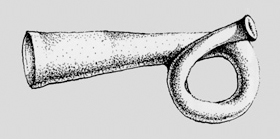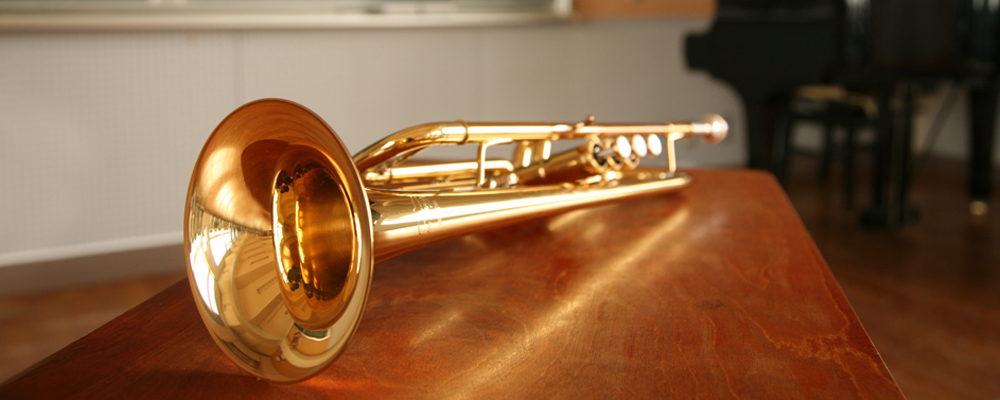The origins of the Trumpet
The birth of the trumpet
The forerunners of the trumpet were made out of various materials and came from various locations
The origins of the trumpet can be traced back several thousand years. However, since the primitive trumpets were rudimentary wind instruments that the player sounded simply by moving his lips, they cannot clearly be distinguished from the forerunners of the horn, on which sound is produced in the same way.
Trumpets of old were made out of various materials, including wood, bamboo, bark, clay, human bone, and metal. Found on every continent, they are thought to have been used in religious ceremonies and sorcery.

Ancient trumpet made of clay, found in Peru.
The trumpet before modern times
In the ancient Greek and Roman eras, trumpets were used for marching in wartime, for which they were admirably suited. Subsequently, almost all European royalty had trumpet bands that played military music.
It was in the seventeenth century that the trumpet came to be used purely in musical ensembles. At that time, however, this was still the so-called natural trumpet, which can only produce natural harmonics, so the trumpet was not yet a fully functional instrument.

A trumpet depicted in the Triumphal Arch of Titus. Jerusalem, second century
Musical Instrument Guide:Trumpet Contents
Structure
How the Instrument is Made
Choosing an Instrument
Care and Maintenance
Trivia
- Trumpeters in Bach's time alternated between instruments with a variety of ranges when performing
- The keyed trumpet-the fruit of the evolutionary process
- Famous trumpet works - Concertos, part 1
- Famous trumpet works - Concertos, part 2
- Famous trumpet works - Solos
- Is a Flugelhorn a horn? Or a trumpet?
- The highest note a trumpet can produce
- Aida trumpets for the "Grand March"
- The secret of the trumpet's traditional tone: small impurities!?

